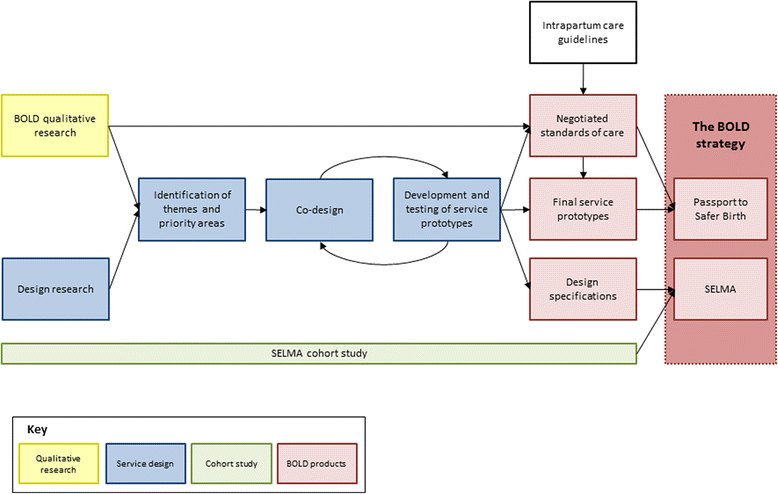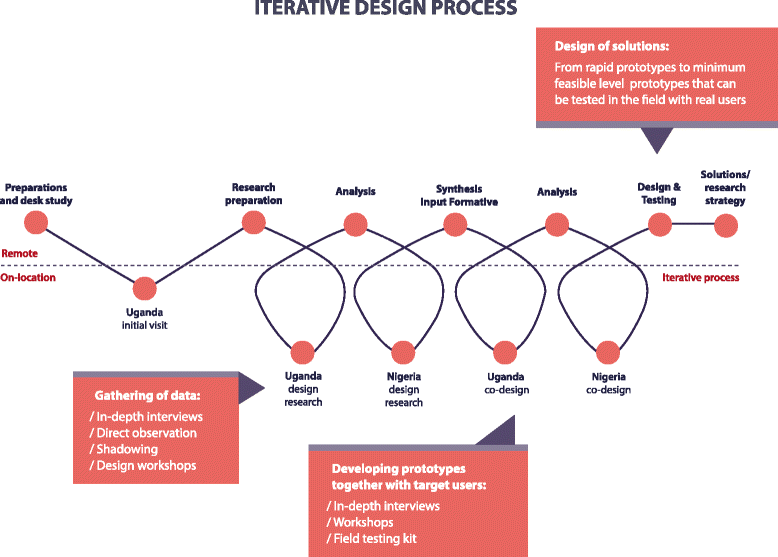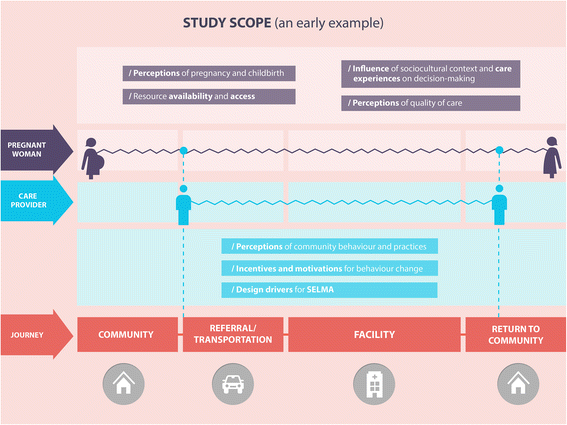Formative research and development of innovative tools for "Better Outcomes in Labour Difficulty" (BOLD): study protocol
- PMID: 26006320
- PMCID: PMC4464989
- DOI: 10.1186/s12978-015-0028-5
Formative research and development of innovative tools for "Better Outcomes in Labour Difficulty" (BOLD): study protocol
Abstract
Background: Most complications during labour and childbirth could be averted with timely interventions by skilled healthcare providers. Yet, the quality and outcomes of childbirth care remains suboptimal in many health facilities in low-resource settings. To accelerate the reduction of childbirth-related maternal, fetal and newborn mortality and morbidity, the World Health Organization has initiated the "Better Outcomes in Labour Difficulty" (BOLD) project to address weaknesses in labour care processes and better connect health systems and communities. The project seeks to develop a "Simplified, Effective, Labour Monitoring-to-Action" tool (SELMA) to assist healthcare providers to monitor labour and take decisive actions more efficiently; and by developing an innovative set of service prototypes and/or tools termed "Passport to Safer Birth", designed with communities and healthcare providers, to promote access to quality care for women during childbirth. This protocol describes the formative research activities to support the development of these tools.
Methods/design: We will employ qualitative research and service design methodologies in eight health facilities and their catchment communities in Nigeria and Uganda. In the health facilities, focus group discussions (FGD) and in-depth interviews (IDI) will be conducted among different cadres of healthcare providers and facility administrators. In the communities, FGDs and IDIs will be conducted among women who have delivered in a health facility. We will use service design methods to explore women's journey to access and receive childbirth care in order to innovate and design services around the needs and expectations of women, within the context of the health system.
Discussion: This formative research will serve several roles. First, it will provide an in-depth understanding of healthcare providers and health system issues to be accounted for in the final design and implementation of SELMA. Second, it will help to identify key moments ("touch points") where women's experiences of childbirth care are shaped, and where the overall experience of quality care could be improved. The synthesis of findings from the qualitative and service design activities will help identify potential areas for behaviour change related to the provision and experience of childbirth care, and serve as the basis for the development of Passport to Safer Birth. Please see related articles 'http://dx.doi.org/ 10.1186/s12978-015-0027-6 ' and 'http://dx.doi.org/ 10.1186/s12978-015-0029-4 '.
Figures




References
-
- Ashford L. Hidden suffering: disabilities from pregnancy and childbirth in less developed countries. Population Reference Bureau, 2002.
Publication types
MeSH terms
Grants and funding
LinkOut - more resources
Full Text Sources
Other Literature Sources
Medical

